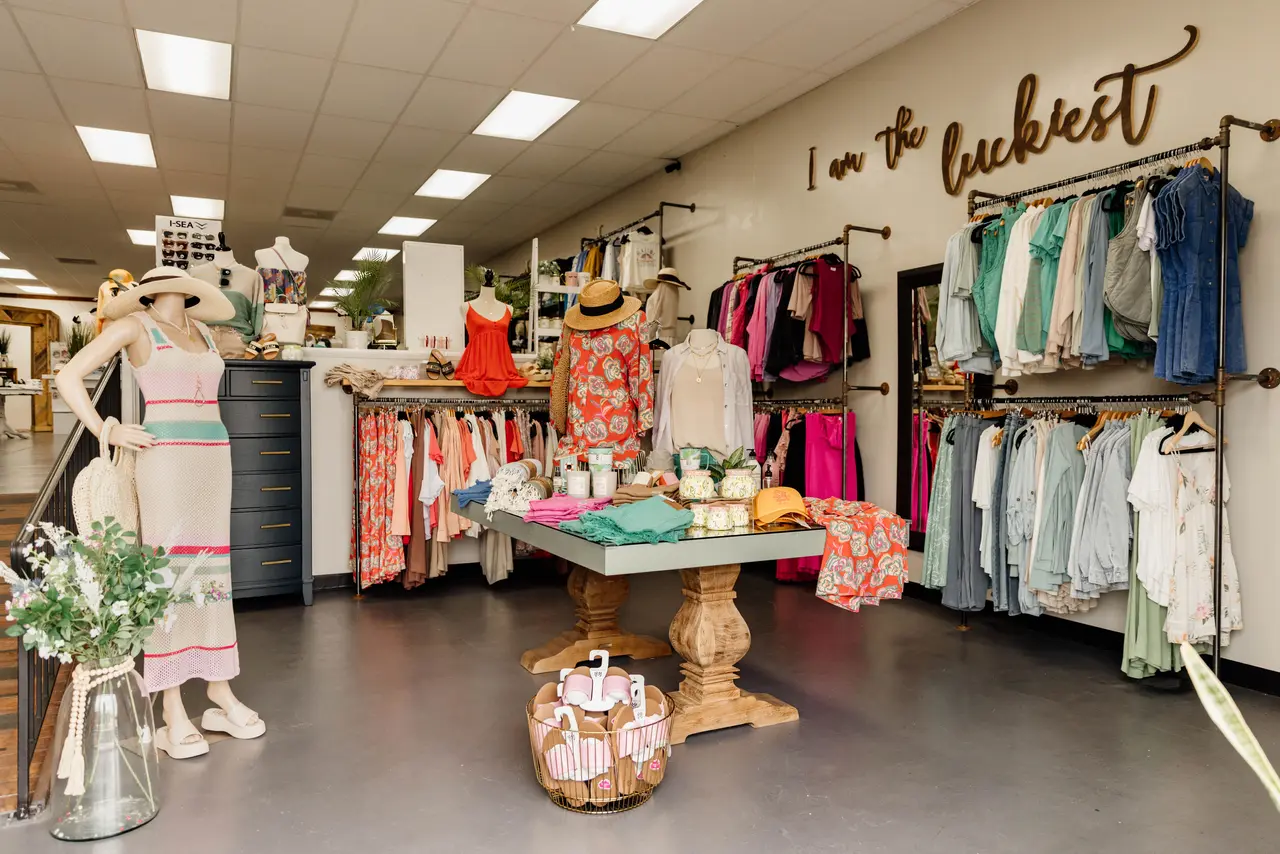Revealing the Secrets Behind Cost Effective Boutique Fashion
Revealing the Secrets Behind Cost Effective Boutique Fashion
Blog Article
Sustainable Fashion: Just How Eco-Friendly Clothing Is Shaping the Future of Style
As the fashion business faces increasing examination over its ecological influence, the rise of sustainable fashion offers a promising choice that straightens style with ecological obligation. Using innovative materials such as recycled fibers and plant-based fabrics, alongside sophisticated approaches like electronic and 3D printing, developers are redefining what it indicates to be fashionable in the modern age. Concurrently, the growing popularity of upcycling and second hand culture is fostering a shift towards a round economic climate. Yet, how does this movement really affect the future trajectory of style, and what difficulties lie in advance in its extensive adoption?
Cutting-edge Sustainable Materials
As the fashion market grapples with its environmental influence, innovative sustainable materials have arised as an essential option for reducing environmental impacts. These products not only lower reliance on fossil gas yet also minimize unsafe pesticide usage and water consumption.
Along with plant-based materials, developments in biofabrication have actually resulted in the advancement of lab-grown textiles. Mycelium leather, stemmed from mushroom origins, offers a flexible and naturally degradable alternative to animal natural leather. Its manufacturing leads to significantly reduced carbon discharges and water use, making it a more sustainable choice for designer looking for to straighten with environment-friendly practices.
Recycled materials are likewise getting grip, with polyester made from recycled plastic containers standing for a considerable development. This advancement not just draws away plastic waste from land fills and oceans yet likewise reduces energy consumption compared to generating virgin polyester. Together, these materials underscore the potential for a much more lasting garment industry, leading the way for environmentally conscious layout and manufacturing.
Eco-Conscious Manufacturing
Structure on the technologies in lasting products, the style market is additionally re-evaluating its production processes to better reduce environmental impact. Key approaches consist of minimizing water usage, decreasing carbon exhausts, and eliminating harmful chemicals. By taking on closed-loop systems, makers aim to recycle water and power effectively, substantially lessening waste. The assimilation of renewable resource resources, such as solar and wind power, right into production facilities further curtails reliance on nonrenewable fuel sources.
An additional crucial facet is the reduction of harmful chemicals traditionally utilized in dyeing and completing fabrics. Eco-conscious makers are moving towards plant-based dyes and waterless dyeing innovations, which not just secure neighborhood ecological communities but likewise boost worker safety and security. Technologies like electronic printing minimize material waste and energy intake, offering a cleaner alternative to conventional approaches.
With the innovation of blockchain innovation, business can now provide detailed insights right into their supply chains, making sure eco pleasant and honest methods at each action. As the demand for eco-conscious items grows, producers are compelled to innovate, guaranteeing that the future of fashion is both elegant and sustainable.
The Rise of Upcycling
Upcycling, a transformative method in sustainable fashion, entails creatively repurposing disposed of materials right into new, top quality products. This ingenious approach not just minimizes waste however additionally decreases the need for basic materials, thus minimizing the ecological impact of garments manufacturing. By reconstructing and reimagining existing items, developers and fashion brands are able to instill creativity into their collections while advertising ecological obligation.

Furthermore, the upcycling movement has empowered independent developers and small companies, that typically lead in development because of their dexterity and creative thinking. By capitalizing on the bountiful accessibility of extra materials, these entities add to a circular economy, demonstrating that style can be both trendy and lasting. Via upcycling, the market takes considerable strides in the direction of a much more mindful and liable future.
Thrift Society's Effect
The expanding second hand society considerably reshapes the landscape of sustainable fashion, stressing the relevance of conscious usage. This social shift encourages customers to welcome pre-owned garments, thus minimizing the demand for brand-new garment production and reducing ecological impact. Second hand purchasing not just prolongs the lifecycle of clothing yet likewise decreases the carbon impact linked with production, moving, and throwing away clothing.
A vital element of second hand culture is its democratization of fashion. By offering a broad range of designs from different ages at budget friendly prices, thrift stores make fashion obtainable to a broader target market. This accessibility fosters a feeling of individuality and creative thinking, as customers mix and suit special items to curate tailored wardrobes without adding to the fast style cycle.
Furthermore, thrift society advertises circularity in fashion, straightening with the concepts of a circular economy. As more customers and developers welcome second hand society, the style market is compelled to adapt, incorporating sustainable methods to satisfy the expanding demand for eco-conscious alternatives.

Future Trends in Style
Fashion's advancement is progressively formed by technical technologies and sustainability-driven campaigns. As consumers end up being much more environmentally mindful, the sector is reacting with groundbreaking improvements that redefine the future of style. One popular fad is the surge of electronic style, where digital garments can be put on in augmented reality environments, substantially decreasing material waste. This change not only provides to the digital-savvy customer click yet likewise reduces the environmental footprint commonly connected with garment manufacturing.
Additionally, the assimilation of blockchain technology provides brand-new opportunities in openness and traceability, permitting customers to validate the sustainability credentials of their garments. boutique fashion. This ensures liability in supply chains and promotes moral sourcing methods. 3D printing is yet one more development that guarantees to revolutionize producing procedures by allowing on-demand manufacturing, consequently decreasing excess stock and waste
As these technologies grow, they are positioned to change the fashion landscape, merging style with sustainability. The future of fashion, consequently, lies in a seamless mix of innovation, innovation, and eco-friendly responsibility.
Conclusion
The makeover of the apparel industry with lasting methods shows a crucial change in the direction of ecological liability. The integration of ingenious materials, eco-conscious production methods, and the embracement of upcycling and thrift culture highlights a commitment to lowering eco-friendly impacts. As these techniques acquire energy, they redefine the sector's narrative by prioritizing honest and lasting selections. This development not only aligns style with visit the site environmental sustainability but additionally establishes a precedent for future fads concentrated on duty and innovation.
As the style sector encounters raising analysis over its ecological impact, the rise of lasting fashion offers a promising choice that aligns style with eco-friendly duty.As the fashion market grapples with its ecological impact, innovative sustainable materials have emerged as a vital remedy for minimizing environmental footprints. Together, these products highlight the capacity for a more lasting fashion market, leading the method for eco conscious layout and manufacturing.
Structure on the developments in sustainable materials, the fashion sector is additionally re-evaluating its production procedures to even more lower ecological effect. boutique fashion.Upcycling, a transformative technique in sustainable style, includes artistically repurposing thrown out products into brand-new, premium items
Report this page